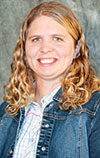South Dakota State University Extension and state public health veterinarian Russ Daly suggests producers implement at least portions of the Sandhills Calving System. The system was developed in the Sandhills of north-central Nebraska in the late 1990s when producers were experiencing high death loss in calves.
Ranchers partnered with University of Nebraska veterinarians and local veterinarians to figure out a way to get a handle on the 10 to 15 percent of calves dying due to scours.
Daly says most of the calves affected by scours that were dying were between 10 and 17 days old. That time frame correlates with the incubation periods of most common pathogens that cause scours.
“The conclusion was that these calves were getting exposed to an overwhelming dose of these organisms at a very early age, around the time of birth,” Daly says.
Other observations in these herds showed that early calving season went well. The probability of calves dying of scours was low in the first two weeks of the season. However, the later the season went, the more calves became sick with scours.

The solution came by moving the remaining pregnant cows to a new, clean pasture where the scours organisms have not been shed. The year after implementing the system, one of the herds had no calves die due to scours, and they only treated four calves.
Daly says the goal when using the Sandhills Calving System is to re-create the cleanliness of the beginning of the calving season later in the calving season.
When calving season kicks off, producers start calving in their normal calving area. Once the first calves start hitting a week to 10 days old, then it is time to move the pregnant cows to a new area.
“They gather up the cows that haven’t calved yet and move them to a new pasture where no other animals and no other calves have been born,” Daly says.
“Those calves that were born now from those pregnant cows, they’re not exposed to all of the germs that were deposited into the environment by not only the cows themselves but the calves that were in the pen from that 10- to 17-day-old range, where they were shedding a lot of these organisms.”
Moving the pregnant cows to a new calving area creates a new calving season for that group.
From everything Daly has seen, moving those pregnant cows does not cause extra stress on them. Moving the pregnant cows versus moving cow-calf pairs appears to work easier.
“It seems to be a pretty easy thing to do. The pregnant cows don’t have a calf to watch over, so they are pretty easy to move relative to those pairs,” he says.
While the ranchers in the original study had large pastures and were running about 800- to 900-cow herds, Daly believes the Sandhills Calving System can work across the country and in different-size herds.
“It’s a really scalable plan. Any size of herd can do it. It takes more pasture and more fence for larger herds to do it, of course. You’re still applying the same kind of concepts if it’s a 20-cow herd or a 2,000-cow herd,” Daly says.

While the system has been around for about 20 years, Daly does not get the sense that it is sweeping the nation. He does ask his students if they have heard of it, and more and more students are raising their hands.
Daly says some producers are likely using portions of the system and not realizing it – but not all of it. Some may think that pairing up cows and calves right away and getting them out of the calving pasture is enough to prevent the spread of scours.
“No matter how quickly you pair up those cows and calves and get them out of the calving pasture, you still are dealing with a calf that was born into that contaminated environment and what he picks up in those first few hours of life is going to be the thing that causes that scours case in seven to 10 days,” Daly says.
Frequent bedding and scraping of calving pens can help lower the number of scours germs but, as the calving season goes on, germs have built up that cleaning and bedding might not be enough to keep scours under control. Vaccinating in late pregnancy with young cows and heifers is a good strategy to help boost colostral immunity in those calves.
Daly suggests visiting with a veterinarian for advice in setting up a scours prevention plan. He also says most producers like a certain spot to calve that is close to the barn.
“Shelter during the early part of the calving season is always an issue, too. I’m not going to say it’s easy,” Daly says. “If you calved cows on this patch of ground for a long period of time, and you have always had scours problems, it’s time to think of doing something different.” ![]()
Wendy Sweeter is a freelance writer based in South Dakota.
PHOTO 1: Any size of herd can be adjusted and utilized for the Sandhills method.
PHOTO 2: Moving pregnant cows in the Sandhills Calving System is easier than moving them when they have a calf at their side.
PHOTO 3: Frequent scraping of pens helps the Sandhills method be more effective in preventing scours. Photos courtesy of Wendy Sweeter.







